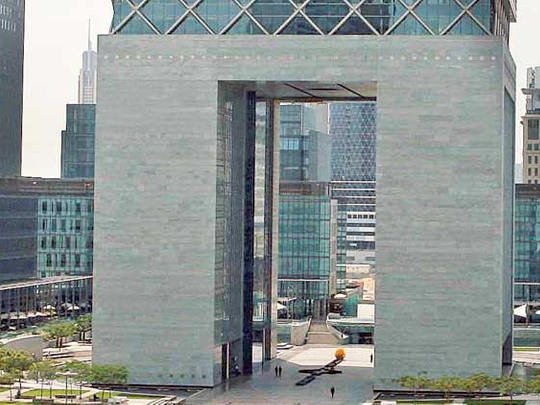
Dubai: The big surge happening in the global Islamic finance sector is expected to benefit Dubai as it pitches to become a global Islamic financial hub, analysts said.
“Global Islamic Finance is expected to maintain its rapid pace of growth, strengthening itself as a real alternative to conventional finance,” said Stuart Anderson, Managing Director & Regional Head, Middle East at Standard & Poor’s.
"With strong growth in Islamic finance in the region in the form of rising sukuk issuance, creation of innovative Islamic financing structures and increasing number of corporates and government related entities raising long-term funding through Islamic financing, Dubai can play a key role in building Islamic capital market infrastructure
Despite registering healthy volumes in 2013, the sector is seemingly struggling to match last year’s exceptional growth due to tougher market conditions. Worldwide year-to-date issuance dipped 25 per cent from last year to $77.4 billion, as of September 22, 2013. S&P believes 2013 sukuk issuance is on course to cross the $100 billion mark.
In the third quarter, the Gulf region witnessed a slowdown in issuance largely because of rising yields driven by the expectation that the US Fed would cut the bond buying programme. With the Fed deciding to postpone the tapering, the yields have flattened. “We expect more issuers from the region to tap the market as the yields are down while the supportive environment is boosting the prospects of sovereigns, government related entities, financial institutions and banks raising long term funding through sukuk,” said Karim Nassif, Associate Director, Infrastructure of S&P.
S&P analysts expect Africa with significant Muslim population will be the next frontier of sukuk expansion. “With most Sub-Saharan African countries running large fiscal and current account deficits, are currently financed conventional bonds. There is clearly an opportunity for Sukuk issuance,” said Nassif.
As global awareness of Islamic finance is gaining momentum, the Islamic financial market would benefit from a greater volume of sukuk to satisfy the needs of global investors, said Khalid Howladar, Senior Credit Officer, Islamic finance at Moody’s Investors Service. “If we take the total assets of Islamic banks globally, it is expected to be around $1.5 trillion, which is still under 1 per cent of total global financial assets,” said Howladar.
Global awareness
Although countries that are most likely to use this type of financing are from the Middle East and Asia, there is growing global awareness about Islamic instruments as an asset class and as financing tools.
Structural complexity and extensive legal documentation are the hurdles which face Islamic finance investors and inhibit the growth of this market segment. Despite such challenges, there is growing interest in Islamic financial instruments because they provide access to a new and growing liquidity pool for borrowers. As Islamic banks and institutions tend to be extremely liquid and supply of sukuk still remains limited, recent sukuk issuances have all been oversubscribed several fold.
There is significant demand from international investors for exposure to Gulf and Asian debt instruments. Whereas, Islamic principles encourage that investment should be restricted to asset backed financial instruments. The fusion of these two distinct markets renders Islamic instruments extremely complex.
Some of the recent innovations in the sector look promising — for instance the shortage of instruments to boost capital base or allocate excess liquidity into Sharia-compliant investment options. Such recent innovations include the use of hybrid sukuk by GCC banks to strengthen capital and the ‘International Islamic Liquidity Management (IILM) 2 SA’ vehicle set up by Malaysia-headquartered IILM Corporation to better manage short-term allocation of excess liquidity.











